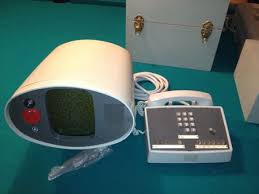Nuance Audio is a new option for people who resist traditional aids, from the company that makes Ray-Bans and operates LensCrafters.
Seekers of Meaning Podcast Posted Online March 7, 2025
What's Next Longevity Deal Talk Episode 32, January, 2025
Presentation: What's Next Longevity Venture Summit, June, 2025

 What problem is being solved? Consider the solution to slightly thorny and REALLY thorny problems. Do you wonder about the thought process that produces them – isolated in a conference room bubble, what are the thinkers considering before these announcements? Must a misfire (or multiple misfires) precede the right solution? And shouldn't the solutions be of a scale (large or small) that fits or sounds like it fits the problem?
What problem is being solved? Consider the solution to slightly thorny and REALLY thorny problems. Do you wonder about the thought process that produces them – isolated in a conference room bubble, what are the thinkers considering before these announcements? Must a misfire (or multiple misfires) precede the right solution? And shouldn't the solutions be of a scale (large or small) that fits or sounds like it fits the problem? In home and out and about – new and not quite here offerings. The top of the list alphabetically is the not-yet-here and pricey
In home and out and about – new and not quite here offerings. The top of the list alphabetically is the not-yet-here and pricey  Tech adoption of the 65+ is now buried in a Pew appendix. If age were an ethnic or racial minority, outrage at technology ageism would be vocal and constant. The 65+ are a
Tech adoption of the 65+ is now buried in a Pew appendix. If age were an ethnic or racial minority, outrage at technology ageism would be vocal and constant. The 65+ are a  You go, business pro, and so goes your privacy. [Rant on] You loved your phone but one day a useful part of it breaks…a sad day all around -- amazingly right at the end of
You go, business pro, and so goes your privacy. [Rant on] You loved your phone but one day a useful part of it breaks…a sad day all around -- amazingly right at the end of  Market sizing, trending, and targeting all depend on data. Marketers understand this – and their sources,
Market sizing, trending, and targeting all depend on data. Marketers understand this – and their sources,